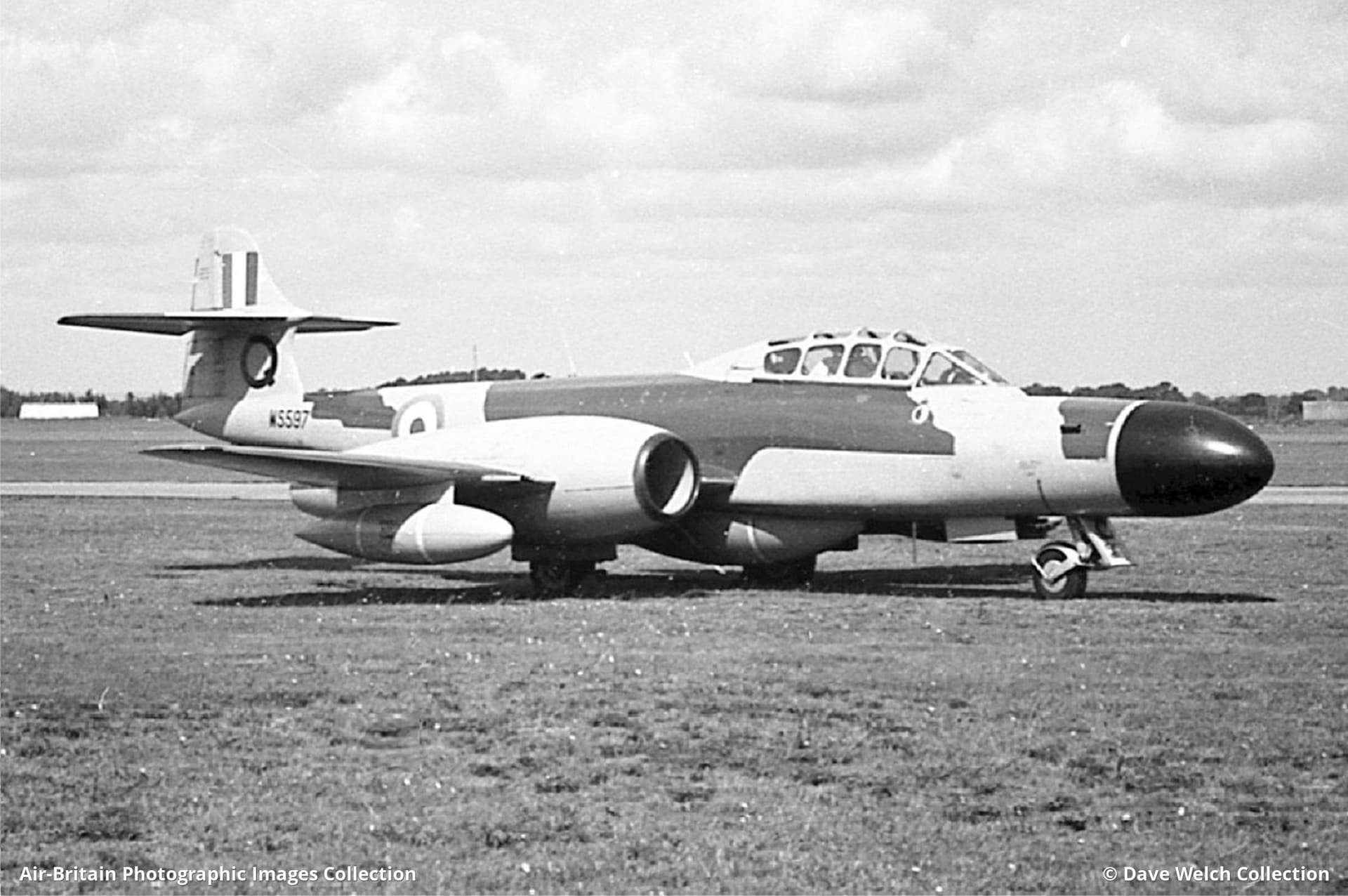- Yes
- No
Armstrong Whitworth Meteor NF.12

Design and service history:
The Gloster Meteor made its maiden flight on the 5th of March 1943, and would go one to be the first mainline service British jet fighter to enter squadron service. Due to this first mover advantage, a large number of variants would be developed with many entering service, such as the improvements made between the fighter F.3, F.4 and F.8, to more role-specific versions like the FR.9 and the subject of this suggestion today, the NF.11 night fighter variant.
The NF.11 started life as a requirement to replace the increasingly obsolete de Havilland Mosquito night fighters then in service with the RAF for nocturnal air defense. To meet this requirement put forth by the air ministry, Gloster proposed a design based on their pre-existing two-seater training variant of the Meteor, the T.7, itself a modified version of the F.4. The layout for the T.7 had the pilot in the front seat, and the navigator in the rear.
Once work began, though, the project was quickly transferred to Armstrong Whitworth, who were tasked with performing both a detailed design process and production of the then accepted type. In order to accommodate the radar suite necessary to be an all-weather fighter, the 4 20mm Hispano V cannons found in the nose of the normal fighter meteors had to be moved to the wings, outboard of the engines. Interestingly, though the NF.11 was based on the T.7 it used the fuselage and tail of the F.8 combined with the longer wings of the F.3 in order to more easily accommodate the aforementioned cannons. The final modification was the extension of the nose to contain the AI Mk 10 (the 1940s Westinghouse SCR-720) Air Intercept radar. The addition of a ventral fuel tank and wing-mounted drop tanks completed the modifications in the 4 prototypes, and the type was accepted into service as the Armstrong Whitworth Meteor NF.11.
The first prototype would fly in May of 1950, and would be the first of 324 NF.11’s that would be eventually built, 311 of which would see service with the RAF. Due to the successful adoption of the NF.11, it was little surprise that the Air Ministry would be keen to manufacture an improved version of the existing design as radar technology improved, which would ultimately become the NF.12. This desire would result in the integration of the improved US-built APS-21 system, which should be familiar to people who have flown the F3D-1 in-game. This addition gave the NF.12 both a search and tracking radar, with an improved range over the limited search radar found on the NF.11. This enlarged radar system required the nose section to be made 17 inches (43 cm) longer. This shifted the aerodynamics of the airframe, requiring the tail fin to be enlarged to compensate for the greater keel area of the enlarged nose, as well as to counteract the sideways oscillating motion of the radar scanner. This oscillation, until corrected, had caused difficulty in aiming the guns. The final major change was the change to the new Rolls-Royce Derwent 9 engine, which replaced the older Derwent 8 and provided additional thrust. This change necessitated the wings and airframe to be reinforced to handle the modified engines. Happy with these changes, an order for 100 aircraft was made with deliveries of the NF.12 starting in 1953, and it would enter squadron service in early 1954, ultimately serving with seven RAF squadrons before being phased out between 1958-1959.
Vehicle specification:
Engine: Two Rolls-Royce Derwent 9 engines
Thrust: 16.9 kN (1,725 kgp / 3,800 lbf)
Span: 43ft
Length: 49.91ft
Gross Weight: 16,542lb
Maximum level speed at sea level: 587mph
Maximum level speed at 30,000ft: 547mph
Rate of climb at sea level: 4,800ft
Ceiling: 40,000ft
Cruise Range at normal load: 860 miles
Radar: APS-21
Armament: 4 x Hispano Mk. V 20mm cannons in wings
Additional historical pictures:
Historical documentation showing the main difference between the Derwent 8 and 9, taken from Derwent MK.5, 8 and 9 aero engines:


Sources:
- NF Meteors: The RAF’s First Jet Night-Fighters (Good article covering the development of the night fighter meteors as well as their service)
- Gloster Meteor - Wikipedia (Wiki page for the Meteor family)
- Aviation photographs of Gloster Meteor NF12 : ABPic (Collection of photos)




